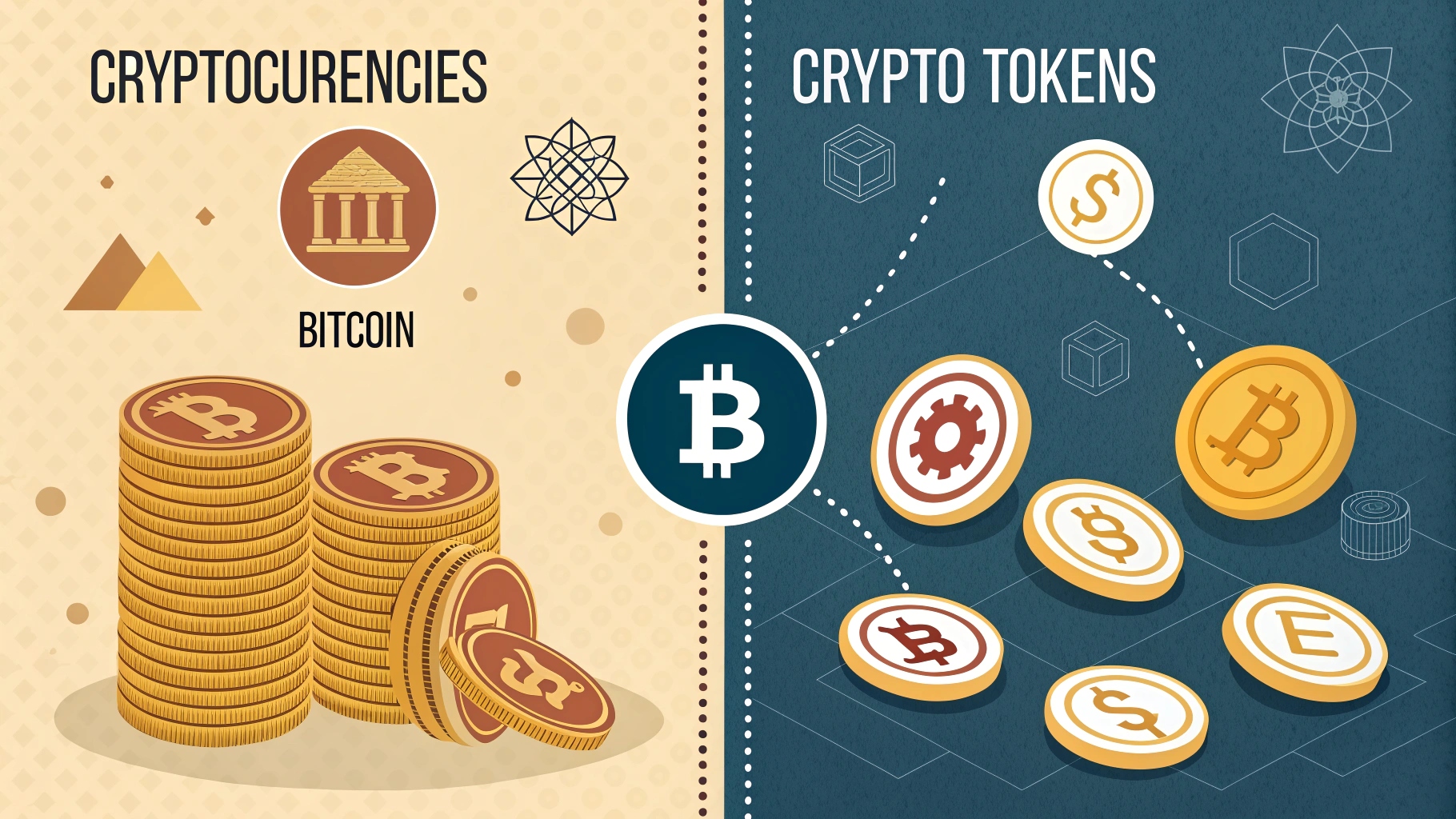In the world of blockchain, digital assets primarily fall into two categories: cryptocurrencies and crypto tokens. While these terms are often used interchangeably, they serve distinct purposes within the blockchain ecosystem.
🔹 What Are Cryptocurrencies?
Cryptocurrencies are native digital assets of a blockchain network. They are integral to the functioning of the blockchain, facilitating operations and incentivizing participants.
🛠️ Key Characteristics:
- Native to Their Blockchain: Each blockchain has its own cryptocurrency (e.g., Bitcoin for the Bitcoin network, Ether for Ethereum).
- Consensus Mechanism: Used to reward participants who validate and record transactions, maintaining the network’s integrity.
- Transaction Fees: Users pay fees in the native cryptocurrency to execute transactions or smart contracts.
🔸 What Are Crypto Tokens?
Crypto tokens are digital assets created on existing blockchain platforms. They utilize the blockchain’s infrastructure but are not essential to its operation.
🧩 Key Characteristics:
- Built on Existing Blockchains: Tokens are developed using standards like ERC-20 (Ethereum) or BEP-20 (Binance Smart Chain).
- Smart Contracts: Tokens are governed by smart contracts that define their rules and functionalities.
- Diverse Use Cases: Represent assets like utility tokens, security tokens, NFTs, or stablecoins.
⚖️ Comparing Cryptocurrencies and Crypto Tokens
| Feature | Cryptocurrencies | Crypto Tokens | |
|---|---|---|---|
| Definition | Native asset of a blockchain | Asset built on top of an existing blockchain | |
| Functionality | Power blockchain operations | Serve specific use cases within applications | |
| Creation | Through mining or consensus mechanisms | Via smart contracts | |
| Examples | Bitcoin (BTC), Ether (ETH), Solana (SOL) | Uniswap (UNI), Chainlink (LINK), Tether (USDT) |
🌐 Use Cases of Crypto Tokens
Crypto tokens have a broad range of applications:
- Utility Tokens: Provide access to a product or service within a platform.
- Security Tokens: Represent ownership in real-world assets like stocks or real estate.
- Stablecoins: Pegged to fiat currencies to minimize volatility (e.g., USDT, USDC).
- Non-Fungible Tokens (NFTs): Represent unique digital items like art or collectibles.
🛡️ Storing Digital Assets: iBrowe Wallet
Managing both cryptocurrencies and tokens requires a secure and user-friendly wallet. iBrowe Wallet offers an integrated solution:
- Browser-Native Integration: Built directly into the iBrowe browser for seamless access.
- Multi-Asset Support: Handles various cryptocurrencies and tokens across multiple blockchains.
- Enhanced Security: Features like ad-blocking and anti-tracking ensure a safer browsing and transaction experience.
🧠 Conclusion
Understanding the distinction between cryptocurrencies and crypto tokens is crucial for navigating the blockchain landscape. While cryptocurrencies are foundational to blockchain networks, tokens offer versatile applications built upon these platforms. Tools like iBrowe Wallet empower users to manage and utilize these digital assets effectively.
Note: Always conduct thorough research and consider security best practices when dealing with digital assets.


